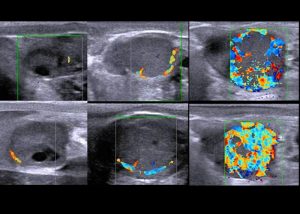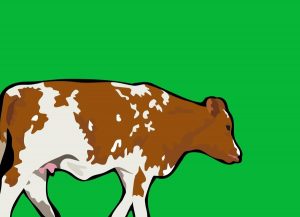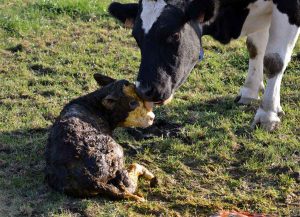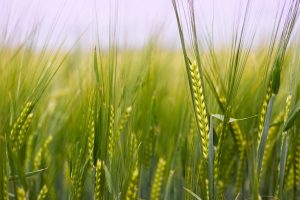Andrés Haro & Alvaro Garcia
To achieve their greatest reproductive potential, dairy cows need to conceive as soon as possible after calving. Endocrine changes, referred to as the return to post-partum ovarian activity, occur after uterine involution and function normalization of the hypothalamus-hypophysis-ovarian axis. The use of equine chorionic gonadotropin (eCG) in lactating cows can induce post-partum ovarian activity causing follicle growth to resume.
Recent research conducted at the experimental Unit of Teagasc Moorepark, Ireland, demonstrated the effects of eCG on the onset of ovarian activity, uterine health and uterine involution in dairy cows postpartum. Rojas et al. (2019) used 34 freshly bred multiparous and primiparous dairy cows, which received intramuscular injections of 2 ml (500 IU) of eCG (treatment) or 2 ml of 0.9% sodium chloride (control) at 8 days postpartum.
Procedures:
- Progesterone concentrations were measured in milk samples collected from day 10 until day 60 postpartum.
- Ovarian activity was measured from day 10 until day 14 postpartum.
- Uterine involution (diameter of cervix and horns) was evaluated using transrectal ultrasound on days 21, 28, 35, and 42partum.
- Uterine health was assessed by analyzing vaginal discharge.
Cows were housed in the same pen, fed ad libitum with more than 6 kg of concentrate per day and milked twice a day. The beginning of the luteal activity and characteristics of the estrous cycle were determined if the milk sample contained more than 3 ng/ml of progesterone. The duration of the luteal phase was determined when two consecutive milk progesterone concentrations were greater than 3 ng/ml at the beginning and at the end, and it was defined as the inter-ovulatory interval. Vaginal and uterus health were assessed by vaginal discharges, endometrial cytology and by measuring the diameter of the cervix and horns of the uterus. Results were as follows:
- Treatment with eCG and parity did not affect the start of the luteal activity, follicular development, and the post-partum estrous cycle. However, there was an interaction with a higher incidence of ovulation during the first post-partum follicular wave in eCG cows compared to control (68.7% vs. 61.5%, respectively).
- There was no eCG effect in cows that resumed estrous cyclicity, but eCG accelerated postpartum luteal activity in multiparous but not in primiparous cows.
- Uterine involution in cows treated with eCG was similar to that in control cows. After delivery however, the gravid and non-gravid uterine horns were smaller in primiparous cows than in multiparous cows.
- Vaginal discharge postpartum decreased in cows treated with eCG compared to control cows. Vaginal discharge also decreased in multiparous cows compared to primiparous cows.
In conclusion, the use of equine chorionic gonadotropin in dairy cows during the postpartum period does not affect ovarian activity. It improves however, the uterine health by reducing vaginal discharge and results in better uterine involution.
Reference:
Canadas, E. R., Lonergan, P., & Butler, S. T. 2019. Effect of equine chorionic gonadotropin administration on day 8 post-partum on ovarian follicular development, uterine health and uterine involution in lactating dairy cows. Theriogenology, 123, 54-61.
© 2020 Dairy Knowledge Center. All Rights Reserved.









